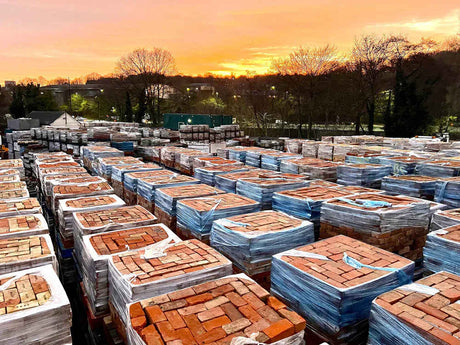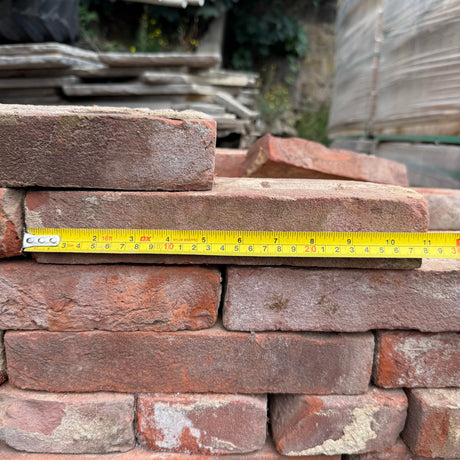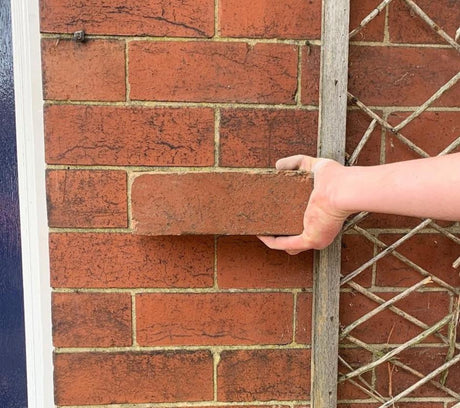Walling stone has an enduring beauty that has captivated architects and homeowners alike for centuries. The use of natural stone in construction not only adds strength and durability but also brings a unique aesthetic appeal to any project. Whether you're planning to build a retaining wall, a front garden wall or boundary, or a façade for your home, choosing the right walling stone is crucial. This comprehensive guide will walk you through the various aspects of wall stone, from its definition and types to factors to consider when selecting the perfect option.
1. Understanding Walling Stone
Walling stone refers to natural stones that are used to build walls or structures. It has been a popular choice for construction purposes for centuries. The timeless appeal of natural stone lies in its ability to blend seamlessly with the surrounding environment, creating a harmonious and organic appearance. The use of walling stone not only adds visual interest but also provides structural integrity to the project.
2. Types of Walling Stone
There are several solutions available when it comes to stone walling. Natural stone comes in a variety of colours, textures, and levels of durability, so you may pick the type that most closely matches your requirements and tastes. Limestone, sandstone, granite, slate, and basalt are a few of the stone types that are frequently used to build walls.
A very long-lasting and low-maintenance choice for walling stone is granite. It is recognised for its durability and strength, making it perfect for locations subject to extreme circumstances. Slate gives any project a refined touch thanks to its smooth, fine-grained texture and unique layers. Finally, basalt makes a remarkable contrast when utilised as a walling stone because of its deep, rich colours.
3. Factors to Consider When Choosing Walling Stone
Numerous criteria must be carefully taken into account while choosing the ideal walling stone. To start, consider the overall aesthetics and architectural style you want to accomplish. Every kind of retaining garden walling stone has distinctive qualities that might improve various architectural styles. You can select a stone that matches the design of your project by being aware of its unique characteristics.
4. Popular Walling Stone Options
4.1 Limestone
4.2 Sandstone
4.3 Granite
4.4 Slate
4.5 Basalt
5. Selecting the Right Walling Stone for Your Project
-
Evaluate the characteristics of different stones, considering color, texture, durability, and maintenance requirements.
-
Match the stone to the architectural style of your project. For example, limestone may be more suitable for a rustic design, while sandstone can complement both traditional and modern styles.
-
Consider the colour palette and texture you wish to achieve. Experiment with samples and visualise how the stone will look in different lighting conditions.
-
Consult with professionals and suppliers who specialise in walling stone. They can provide valuable insights and guidance based on their expertise and experience.
6. Installation and Maintenance Tips
-
Before installation, prepare the site and ensure a solid foundation to support the weight of the stone.
-
Use appropriate techniques for building with walling stone, such as dry-stacking or mortaring, depending on your chosen stone and project requirements.
-
Regularly clean the stone using gentle methods and avoid harsh chemicals that could damage the surface.
-
Inspect the stone periodically for any signs of damage or deterioration, and address issues promptly to prevent further problems.
7. Enhancing the Beauty of Walling Stone
-
Utilise lighting techniques to highlight the texture and features of the stone. The strategic placement of lights can create fascinating shadows and a captivating ambiance.
-
Incorporate landscaping elements around the walling stone. Planting flowers, shrubs, or climbers nearby can soften the overall look and provide a natural backdrop.
-
Consider adding decorative elements to the walling stone, such as architectural accents, carvings, or engraved patterns. These details can further enhance the aesthetic appeal and uniqueness of the project.
-
Create focal points and accents by using walling stone in specific areas of your design. This can draw attention to key architectural features or create visual interest.













